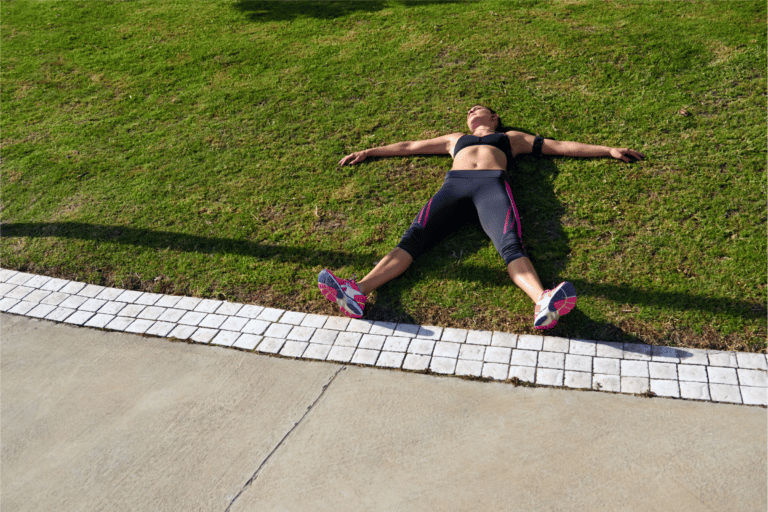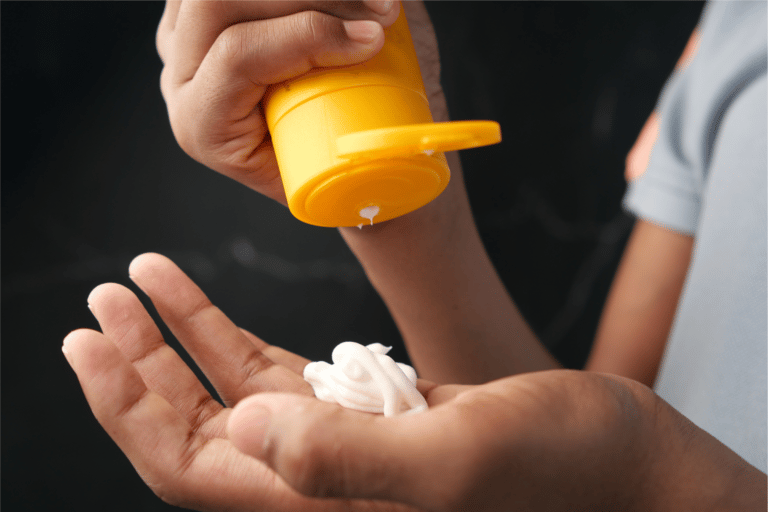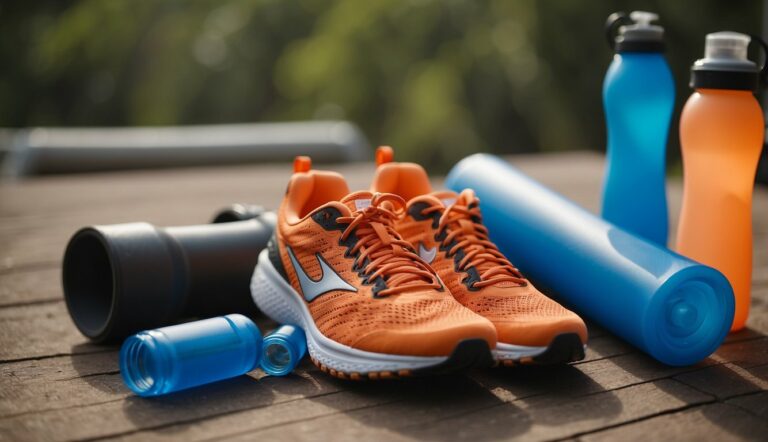How to Warm Up Calves Before Running – Key Routine, Stretches, and Exercises
Warming up your calves before a run is vital to prepare your muscles for the activity ahead and to prevent injury. As a runner, engaging in dynamic exercises for your calf muscles can enhance performance and flexibility.
Begin with a brisk walk or light jogging for five minutes to elevate your heart rate and increase blood flow to your muscles. This step primes your calves for stretching and reduces the risk of strains.
Next, incorporate dynamic stretches that target your calves and Achilles tendon, such as heel raises and ankle circles. Perform these movements for a few minutes to ensure your calves are adequately prepared. Remember to keep your stretches dynamic, meaning they involve gentle movement, rather than static holds, to better simulate the activity of running.
Lastly, employ targeted calf stretches, like the “toes-in” and “toes-out” positions, to work different areas of the calves. Execute these stretches just before running to make sure your calves are activated and ready to support you throughout your workout. With a proper warm-up routine, you’ll set yourself up for a successful and enjoyable run.

Best Calf Warm Up Routine Before a Run (15 Minutes)
Before hitting the ground running, it’s crucial to prepare your calves with an effective warm-up to enhance performance and prevent injury. Starting with dynamic stretches helps boost circulation, flexibility, and prepares your muscles for the activity ahead.
A good calf warm-up routine before a run is essential for preparing your lower leg muscles for the impact of running and can help prevent injuries like calf strains or Achilles tendinitis. Here’s a step-by-step routine designed to activate and stretch your calf muscles:
1. Foam Rolling (3 minutes)
- Use a foam roller to roll out your calves.
- Spend about 90 seconds on each calf, moving slowly and pausing on any tight spots.
2. Ankle Circles (2 minutes)
- Lift one foot off the ground and rotate your ankle 10 times clockwise, then 10 times counterclockwise.
- Repeat on the other foot.
3. Dynamic Calf Stretch (2 minutes)
- Stand an arm’s length from a wall or a sturdy object.
- Place one foot behind you, keeping your heel on the ground and your leg straight.
- Lean forward slightly until you feel a stretch in your back leg’s calf.
- Hold for a few seconds, then release and repeat.
- Alternate legs for about 1 minute per leg.
4. Calf Raises (3 minutes)
- Stand on the edge of a step with your heels hanging off.
- Push up onto your tiptoes, hold for a second, then lower down below the level of the step.
- Perform 2 sets of 15 repetitions.
5. Walking Lunges with a Calf Raise (3 minutes)
- Step forward into a lunge position.
- As you come up, lift your back heel and rise onto your toes for a calf raise.
- Step forward with the other leg and repeat the lunge and calf raise.
- Continue lunging and raising for about 1.5 minutes.
6. Seated Calf Stretch (2 minutes)
- Sit with your legs extended in front of you.
- Loop a towel or resistance band around the ball of one foot.
- Gently pull back on the towel or band until you feel a stretch in your calf.
- Hold for 30 seconds, then switch feet.
Total Time: ~15 minutes
This routine combines foam rolling, dynamic stretching, and strengthening exercises to ensure your calves are well-prepared for a run. Remember to perform these exercises gently and avoid bouncing or jerking movements, which can strain the muscles. If you experience any pain during these exercises, stop and consult a healthcare professional.
Calf-Specific Dynamic Exercises
Effective calf warm-ups enhance your running performance and help prevent injuries. Dynamic stretches specifically target your calf muscles and Achilles tendon, preparing them for the impact of running.
Dynamic Stretching Essentials
When warming up your calves, the goal is to increase blood flow and flexibility. Execute each movement with control and within a comfortable range of motion. Here’s a straightforward routine that can be done anywhere before a run.
Walking Calf Raises:
- Stand tall and walk forward.
- Lift onto your tiptoes with each step.
- Perform 10-15 raises on each leg.
Achilles Heel Drops:
- Find a step or raised surface.
- Place the ball of one foot on the edge.
- Lower your heel below the step and raise back up.
- Complete 10 repetitions on each side.
To ensure an effective warm-up, perform these exercises for 5-10 minutes. Consistency and proper technique are key to maximizing the benefits and minimizing the risk of injury.

Static Stretching After Dynamic Warm-Ups
Before diving into your run, it’s important to prepare your calves with dynamic warm-ups followed by static stretching to ensure flexibility and prevent injury.
Calf Stretching Techniques
To effectively stretch your calves using static stretches, position yourself facing a wall. Place your hands on the wall, extend one leg back with your knee straight, and gently press the heel into the ground until you feel a stretch in your calf muscle. Hold this position for at least 30 seconds, then switch legs.
For a deeper stretch:
- Standing Calf Stretch
- Stand arm’s length from a wall.
- Place your right foot behind your left.
- Bend your left leg forward while keeping your right leg straight.
- Keep your right heel on the ground.
- Hold the stretch for 30 seconds, then switch legs.
Integrating Static Stretches Post-Dynamic Warm-Up
After completing a series of dynamic warm-ups, such as light jogging or leg swings, transition to static calf stretches. This sequence relaxes and lengthens the calf muscles after they have been activated. Incorporate a calf stretch into your routine as follows:
- Post-Dynamic Warm-Up
- Finish any dynamic activity like light running or jumping jacks.
- Shift to a stationary position.
- Calf Stretch Sequence
- Hold each stretch for 30 seconds.
- Repeat 2-3 times on each side.
For balance, pair calf stretching with hamstring and quad stretches to cover all lower body muscle groups. Use a similar static hold approach for these muscles to maximize your pre-run preparation.
Injury Prevention and Best Practices

To protect your calves and overall leg health during running, a strategic approach to your pre-run routine and post-run recovery is critical. Proper warm-up exercises and cool-down techniques can help you avoid common injuries like shin splints and muscle soreness, especially if you’re training for a marathon or increasing your pace.
Pre-run Routine
Before hitting the road, it’s vital to prepare your muscles with a pre-run warm-up to improve flexibility and mobility. Focus on dynamic stretches such as leg swings and lunges, which mimic your running motion, to ensure your calves are ready for activity.
- Dynamic Stretching:
- Leg swings (front-to-back, side-to-side)
- Lunges (forward, side)
- Toe walks
Incorporating these exercises for about 5 minutes can raise muscle temperature and enhance blood flow, preparing your calves for the stress of running.
Cool Down and Recovery
After your run, invest time in a cool-down phase to facilitate recovery and reduce post-exercise muscle soreness. Gradually decrease your pace to a walk, followed by static stretches that target the calf muscles to maintain flexibility.
- Static Stretches:
- Standing calf stretch (wall-assisted)
- Seated calf stretch
- Downward dog pose
A 5-minute cool down that gradually decreases heart rate paired with post-run stretches can greatly minimize calf strain and shin splint risk.
When to Seek Professional Advice
If you experience persistent calf pain or discomfort that doesn’t improve with rest and recovery techniques, it’s important to consult a healthcare professional. Early intervention can prevent a minor injury from becoming more serious, especially if you’re preparing for an event like a marathon.
- Signs to seek professional advice:
- Persistent pain
- Swelling or visible strain
- Inability to bear weight
Remember, timely professional advice can provide tailored exercises and guidance tailored to your specific condition, enhancing your running experience and injury prevention measures.
Understanding Calves as a Muscle Group
Warming up your calves properly can enhance your running performance and prevent injuries. Improving blood flow to these muscles is essential before you commence any running activity.
Anatomy of the Calf Muscles
Your calf consists primarily of two muscles: the gastrocnemius and the soleus. Located at the back of the lower leg, the gastrocnemius is the larger, two-part muscle you can see, creating the bulge beneath the skin. It’s connected to the Achilles tendon, which then inserts into the heel bone. Underneath lies the soleus, smaller yet strong, which plays a critical role in standing and walking.
Importance of Calf Warm-Up
A thorough calf warm-up increases blood flow and prepares the tendons and muscles for the impact and extension they’ll experience while running. It helps in reducing muscle stiffness and increases flexibility, which can decrease the chance of strain or injury. Warming up also activates the connection between your muscles and your brain, which is essential for efficient and safe movement patterns.






